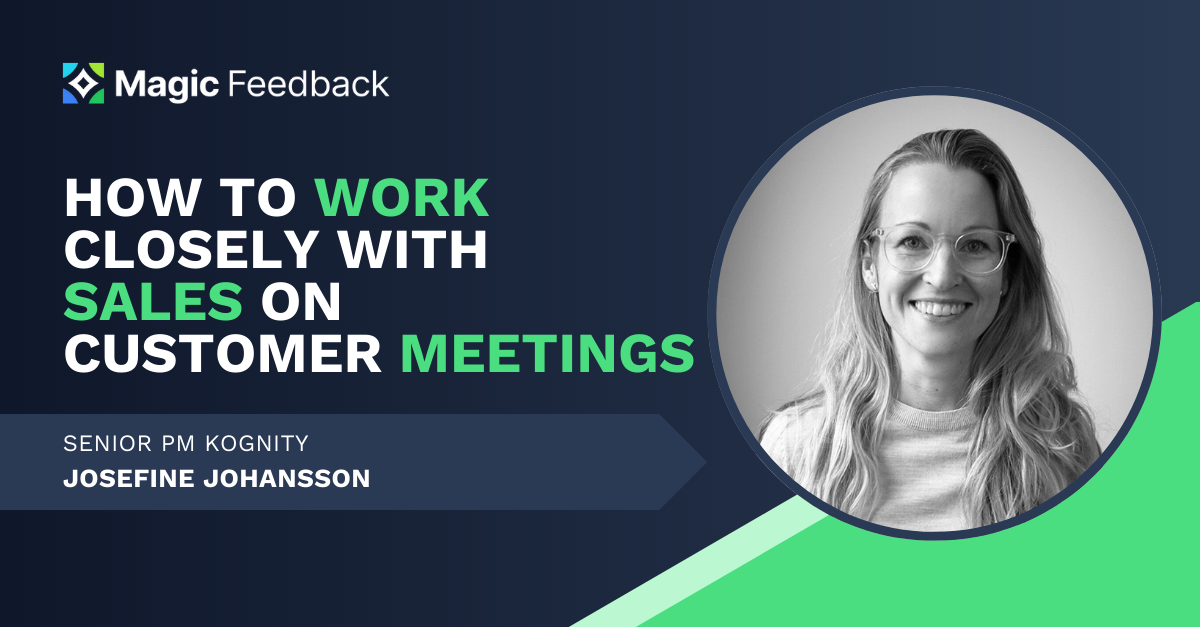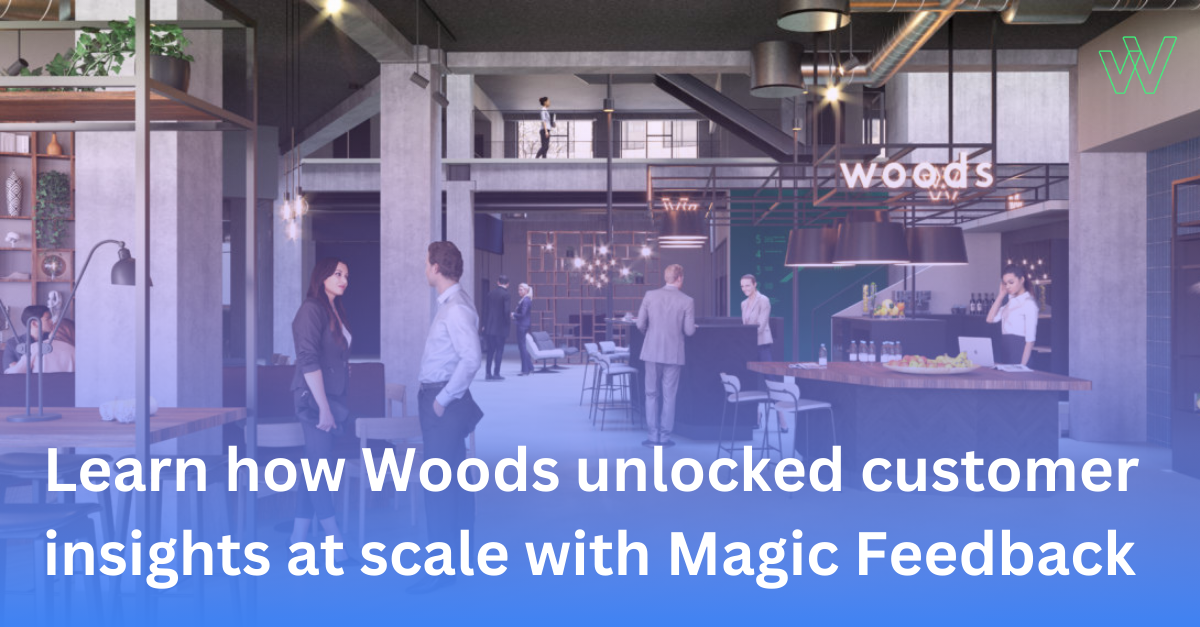
In this thought leadership article, I’m speaking with senior product manager, Josefine Johansson. She has spent more than 10 years in product development across multiple industries. Customer obsession and customer focus is what all PMs aspire to. Josefine is here to share her actionable, replicable steps on how to actually get close to your customers. From booking your first meeting, to how to get the most value from every such interaction. The key – a close collaboration with the sales team.
One challenge I hear quite often from product managers is that they want to get closer to their customers, but don’t have a formal process internally to do so. What is your advice to those product managers?
“I have few things that can help kick it off. First of all, it can be a bit hard and you need to really work for it. Customer meetings are not going to happen on its own and you might have to ask multiple times before you get your first yes. First thing, which is very basic, is to start building relationships with customer-facing teams.”
I asked Josefine if she can elaborate on why it’s important to build these internal relationships:
“If you want to go on sales meetings like prospect meetings, you have to realize that this is what sales does for a living. A lot of their compensation is based on those meetings going in the right direction. So just bringing someone onboard without trusting them or knowing who they are and what they want, will make it unlikely for them to say yes to let you join the meeting.”
Josefine stresses that beyond building these relationships, you need to put an effort into aligning before each meeting:
“So you have to build a relationship with your sales team and go through the meeting rules beforehand. Ask the sales rep some questions to align on expectations: What are you going to do in this meeting? When do you not want me to interfere? Are there some do’s and don’ts for this meeting? I want to make sure that they feel comfortable having me onboard in this meeting.”
On the topic of setting up meetings, Josefine also emphasizes not to make the mistake of asking sales reps to schedule new meetings. Instead she recommends joining existing meetings:
“Don’t ask your sales rep to set up new meetings because you want to gather insights. Few sales reps want to add more meetings for the sake of adding meetings. Instead of that, join existing meetings, both internally and externally, where they are discussing relevant challenges.”
But Josefine also emphasizes the importance of not just being the fly on the wall in meetings. Always add value, this way they would be motivated to invite you again. Or spread the word to other sales people.
“Don’t just join meetings and say you want to be the fly on the wall, but rather ask yourself and the sales rep how you can be of use in this meeting? Make sure you always bring something to add value to the meeting. It could be a roadmap or feature presentation, or anything that you could do that can help your sales colleagues drive a better customer conversation.”
As Josefine mentioned in the beginning, you have to put in the work if you want to attend customer meetings. And she specifically mentions one pitfall to be aware of when it comes to scheduling meetings:
“If you get invited to a meeting, then never be like, oh I can’t join because I have another meeting that time, unfortunately. If someone invites you to go to a customer meeting, then you better make sure to skip whatever you have on the agenda if possible. Otherwise, it’s very unlikely that the customer meeting will be rescheduled to a slot that fits your schedule.”
Now you mentioned do’s and don’ts a bit earlier. What are some obvious ones in your experience?
“Generally speaking, I think you should really try to take a step back and remember you are not leading the meeting. If you are on a sales call with an account executive then let them lead the conversation. The most important thing is to build trust and continuously discuss how you can make them comfortable with you being in the meeting. Every sales rep will have their own do’s and don’ts depending on a certain process they want to follow.”
Now, if you’re lucky that you built a relationship and the sales rep trusts you and invites you to a meeting and you let them lead the meeting, but when it comes to your turn, how do you sort of approach asking questions?
“I would prepare a few questions. Normally there is something you’re investigating and a hypothesis you are trying to validate. So I would prepare a few questions and then also be on the lookout for insights. Most of the time, there is a conversation going on between the sales rep and the prospect, and then I would chip in with maybe a follow up question to get them to clarify or dig a little bit deeper into something. I always make sure I take as little space as possible. A lot of these meetings are also about being open to see where the conversation goes. Remember it’s not your research meeting, but rather time for you to hear what your customers’ challenges are.”
Is there anything else that is important to remember when you attend as a product manager in customer meetings?
“Never end up in a place where you promise things you can’t deliver on. Make sure it’s not perceived as a meeting where they can order improvements and whatnot. But rather be open about how the feedback is going to be treated. Make sure they understand how their feedback is part of a research project, and always thank them for taking the time to contribute to it.”
Now once you get the customer meetings rolling, how many of them should you actually conduct and how frequently in your experience?
“I don’t think there is an exact number as it depends on every situation. In general I think you should try to conduct as many meetings as possible, making sure you continuously build knowledge about your customers. But let’s say you are in a discovery process, as a rule of thumb, when you start seeing patterns you know that you have spoken to enough customers. You can conduct customer interviews in all eternity if you want to. I think the trick is to look at customer meetings as one piece of the puzzle. There are many other signals you need to factor into your research.”
As we approached the end of the interview I asked Josefine, what’s some advice that she has been given that she has carried with her in her everyday life as a senior product manager?
“Learn to speak executive language. Normally you are not 100% in charge of your resources and need some kind of sign off from people involved in the strategy process. You need to learn how to speak in bullet points and only highlight the most important parts first. If you want to get buy-in for what you believe in then you need to be able to persuade stakeholders higher up in the organization.”


